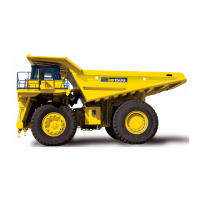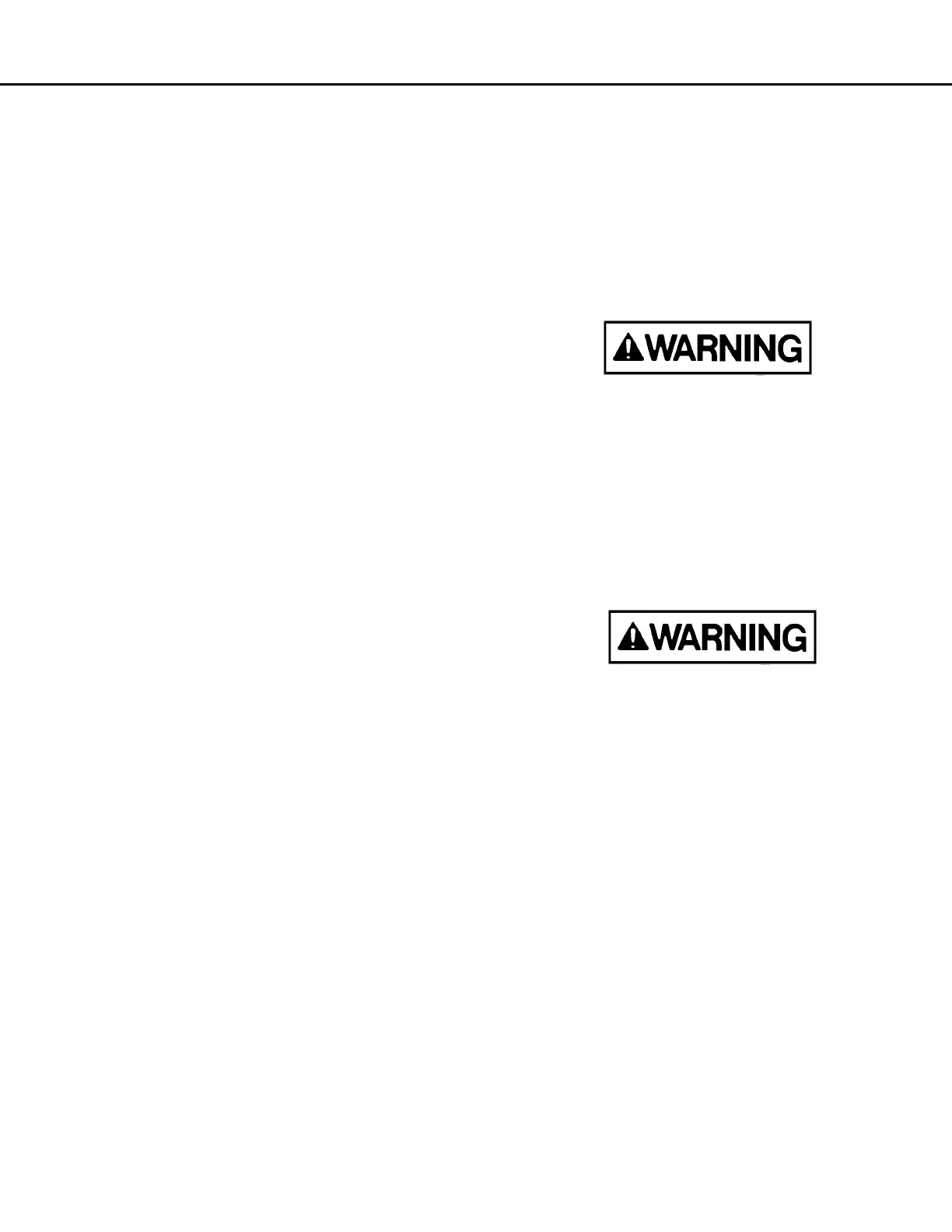OM2032 03/13 Safety - Section 20
Page 20-15
WHEN REPAIRS ARE NECESSARY
1. Only qualified maintenance personnel, who
understand the systems being repaired, may
attempt repairs.
2. Many components on the truck are large and
heavy. Ensure that lifting equipment is of ade-
quate capacity to handle the lift.
3. DO NOT stand under a suspended load. DO
NOT work under a raised body unless the body
retention cable is in place to hold the body in
the raised position.
4. DO NOT repair or service the truck while the
engine is running, except when absolutely nec-
essary. Keep a safe distance from moving parts.
5. When servicing an air conditioning system
charged with refrigerant, wear a face shield and
cold resistant gloves for protection against
freezing. Follow all current regulations for han-
dling and recycling refrigerants.
6. Follow package directions carefully when using
cleaning solvents.
7. If an auxiliary battery assist is needed, first use
one cable to connect the 24V positive (+) post
of the disabled truck batteries to the 24V posi-
tive (+) post of the auxiliary assist. Use the sec-
ond cable to connect the 24V negative (-) post
of the auxiliary assist battery to a frame ground
(-) on the disabled truck, away from the battery.
8. Always disconnect the positive and negative
battery cables of the vehicle before doing any
welding on the unit. Failure to do so may seri-
ously damage the battery and electrical equip-
ment. Disconnect the battery charging
alternator lead wire and isolate electronic con-
trol components before making weld repairs.
Always fasten the welding machine ground (-)
lead to the piece being welded. The grounding
clamp must be attached, as near as possible, to
the weld area. Never allow welding current to
pass through ball bearings, roller bearings, sus-
pensions, or hydraulic cylinders. Avoid laying
welding cables over or near the vehicle electri-
cal harnesses. Welding voltage could be
induced into the electrical harness and cause
damage to components.
9. If the truck is to be towed for any reason,
always consider any special precautions. Refer
to Section 30, Operating Instructions - Towing,
for instructions on how to properly tow the truck.
10. Drain, clean and ventilate fuel tanks and/or
hydraulic tanks before making any welding
repairs.
11. Relieve pressure in lines or hoses before mak-
ing any disconnects.
Any operating fluid, such as hydraulic oil escap-
ing under pressure, can have sufficient force to
enter a person's body by penetrating the skin.
Serious injury and possibly death may result if
proper medical treatment by a physician familiar
with this injury is not received immediately.
12. After adjustments or repairs, replace all shields,
screens and clamps.
13. Use extreme caution when working near tires
and rims.:
DO NOT stand in front of a rim and locking ring
when inflating a tire mounted on the machine.
Observers must not be permitted in the area and
must be kept away from the sides of such tires.
DO NOT weld or heat the rim assembly with the
tire mounted on the rim. Gases inside the tire
may ignite, causing explosion of the tire and rim.
14. Only a qualified operator may operate the truck
in the repair facility or during road testing after
repairs are complete.

